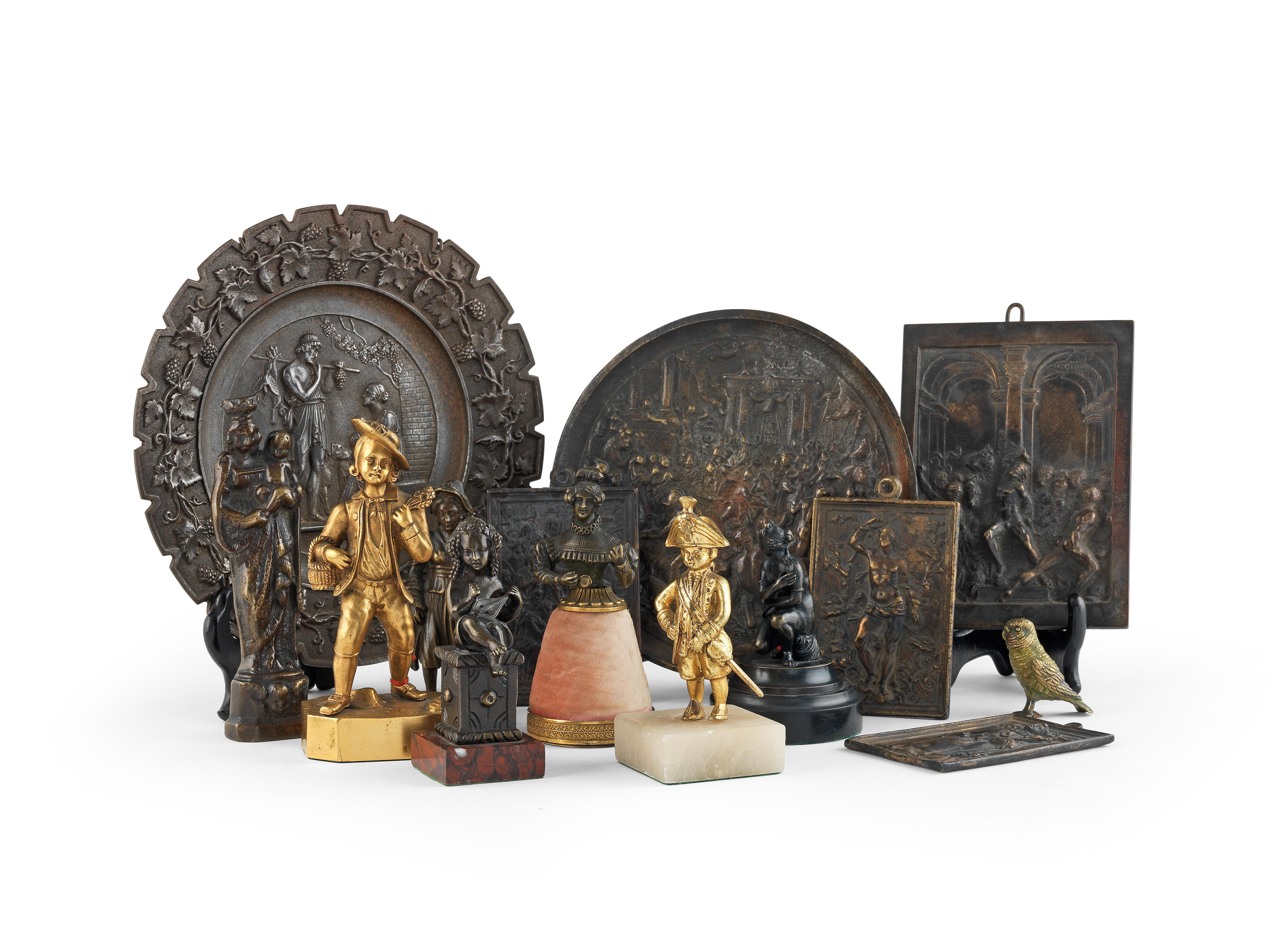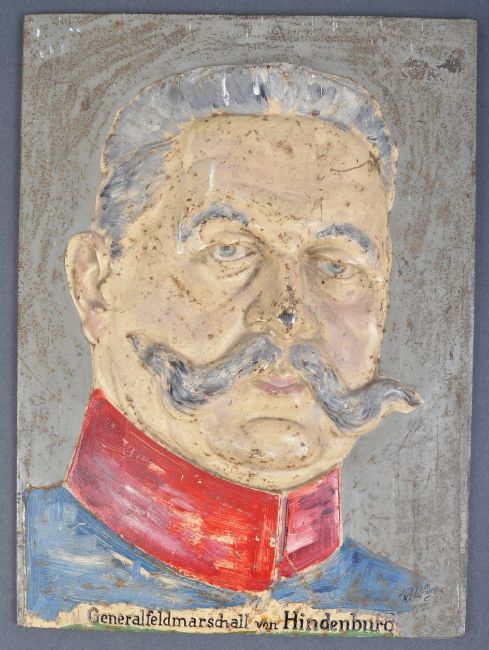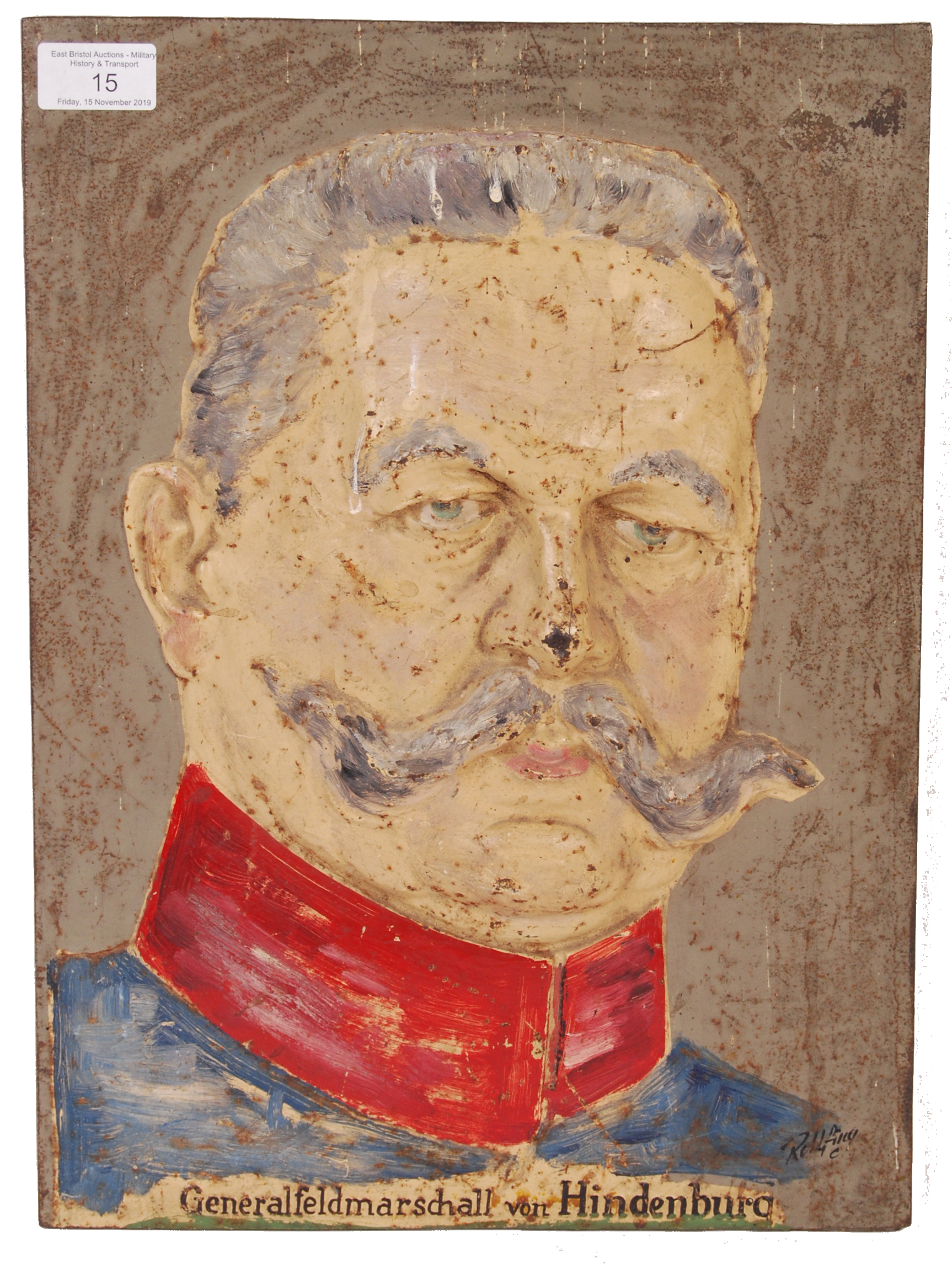Lot details Japan, Meiji period (1868-1912) The circular domed plaque cast in relief with a portrait of Nichiren (1222-1282), a Japanese Buddhist priest and philosopher of the Kamakura period, the plaque further inscribed ‘Namu Myōhō Renge Kyō’ and ‘Nichiren’. The top with two loops for suspension. Condition: Good condition with minor wear and casting flaws. Provenance: German private collection. Weight: 1,931 g Dimensions: Diameter 32.5 cm Namu Myōhō Renge Kyō[a] is a Japanese chant in Nichiren Buddhism, meaning ‘Devotion to the Mystic Law of the Lotus Sutra’ or ‘Glory to the Dharma of the Lotus Sutra’. It is associated with the Lotus Sūtra and was publicly declared by Nichiren on April 28, 1253. The practice of prolonged chanting, referred to as Shōdai, aims to alleviate suffering, eradicate negative karma, and achieve awakening.
Lot details Japan, Meiji period (1868-1912) The circular domed plaque cast in relief with a portrait of Nichiren (1222-1282), a Japanese Buddhist priest and philosopher of the Kamakura period, the plaque further inscribed ‘Namu Myōhō Renge Kyō’ and ‘Nichiren’. The top with two loops for suspension. Condition: Good condition with minor wear and casting flaws. Provenance: German private collection. Weight: 1,931 g Dimensions: Diameter 32.5 cm Namu Myōhō Renge Kyō[a] is a Japanese chant in Nichiren Buddhism, meaning ‘Devotion to the Mystic Law of the Lotus Sutra’ or ‘Glory to the Dharma of the Lotus Sutra’. It is associated with the Lotus Sūtra and was publicly declared by Nichiren on April 28, 1253. The practice of prolonged chanting, referred to as Shōdai, aims to alleviate suffering, eradicate negative karma, and achieve awakening.















Testen Sie LotSearch und seine Premium-Features 7 Tage - ohne Kosten!
Lassen Sie sich automatisch über neue Objekte in kommenden Auktionen benachrichtigen.
Suchauftrag anlegen